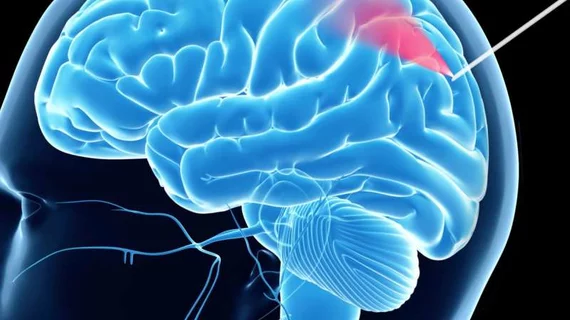Brain biopsy imaging needle could make neurosurgery safer
Researchers from the University of Adelaide in Australia have developed a biopsy imaging needle that could help surgeons identify at-risk brain blood vessels during neurosurgery and avoid fatal cerebral bleeding, according to research published Dec. 19 in the journal Science Advances.
Led by Christopher Lind, MD, consultant neurosurgeon at the University of Western Australia, the researchers found their needle could detect at-risk blood vessels with 91.2 percent sensitivity and 97.7 percent specificity.
Intracranial hemorrhage, or an internal bleeding around or within the brain, can occur during brain biopsies when vessels are mistaken for tissue and aspirated into the needle and removed.
The complication can lead to serious injury or even death, however identifying blood vessels at risk of damage through preoperative imaging may help surgeons avoid such fatal complications.
The imaging needle contains a tiny fiber-optic camera using optical coherence tomography (OCT) and is encased within a brain biopsy needle. When the needle is inserted into the brain during neurosurgery, the fiber-optic camera shines infrared lights onto the brain tissue to differentiate between blood flow and tissue and can help surgeons identify at-risk cerebral blood vessels.
The researchers used the needle in 11 patients without complications and achieved high accuracy. Their results suggest the tool could help make neurosurgery safer.
“By minimizing hemorrhage, the complication profile of the procedure is minimized,” Lind et al wrote. “Furthermore, diagnostic yield could be further improved by facilitating safer acquisition of a greater number of tissue samples without increasing hemorrhagic risk. This, in turn, would contribute to improving cost-effectiveness by reducing the number of repeat procedures that are required.”

